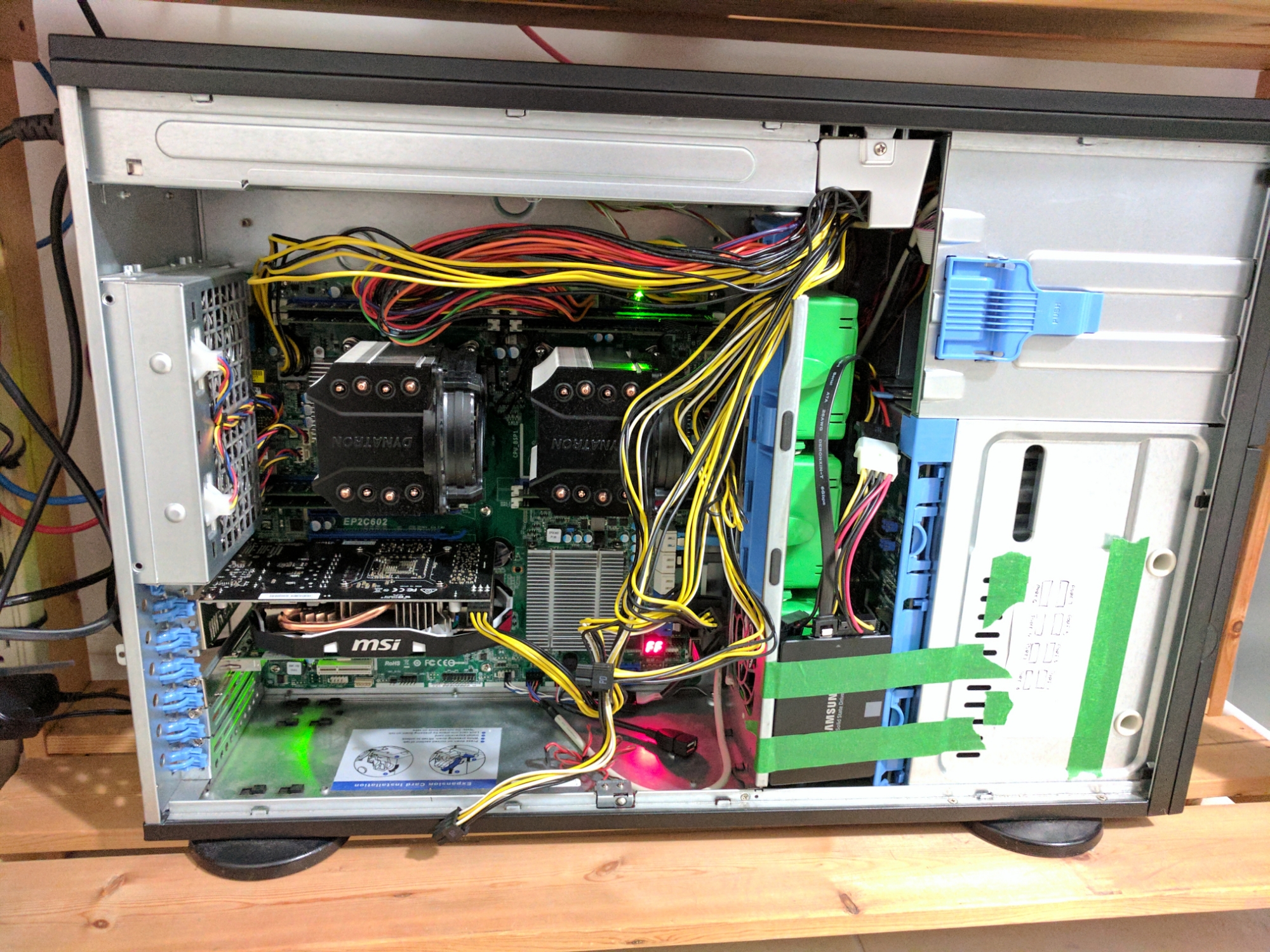New NAS build-Tests
Finally ready to put together a new NAS system. One NAS that I can tune for max performance, and am not rushed to move all the data over (like had happened with every other version in the past).
The hardware used is a dual CPU system running E5-2670 CPUs each with 8 cores/16 threads, for a total of 32 threads, and 32 gigs ram. This may seem like overkill for a NAS, and it is if I was only using this system as a NAS. However I will be using this box as a Virtual Machine and Docker host, so the majority of the resources will go to the VMs and Docker apps.
For software I am running UnRaid 6.3.2 (as of this writing 07 Feb 2017). I’ve enjoyed using it as a NAS in the past and recently the capability to run VMs on it makes it that much more attractive.
As I’m configuring the system, I’m looking to be able to saturate the gigabit LAN connection I have with data transfers. I would be curious to try at some point bonding two 1GB lines to get an aggregated 2GB connection, but that’s for another time as I need to run more ethernet cables first.
Data transfers from drive to drive within UnRaid (when the drives were empty) seem to suggest that the max drive speeds is around 150-160MB/s. The parity check operation resulted in similar speeds (150-160MB/s) when it started. Half way though the parity check the speed dropped to 125MB/s, presumably because the disk is now writing to the center of the platter as opposed to the outside where the speeds are faster. At the very end of the parity check (at the inner-most area of the drive) the speeds were just shy of 80MB/s.
Over the network is another story, as the max throughput over a gigabit ethernet connection maxes out at around a theoretical 113MB/s.
Given that I am not in a rush to move all the data over to the new NAS, I want to systematically test speeds on the system before I put it to work. Here’s some numbers:
First setup consists of both the WD 4TB and HGST 4TB drives being data drives (no parity). The 256GB SSD was not enabled when writing to the array over the network, to assess the drive performance. All NAS read and writes were to the array, not the specific drive. Speed tests were done using a 1.7GB file.
– Copying data from HGST 4TB to WD 4TB -> 140-150MB/s
– Copy data from workstation to Pluto-NAS : SSD on workstation to HGST 4TB, no cache, no parity -> 110-113MB/s (saturating 1GB lan)
– Copy data to workstation from Pluto-NAS : HGST 4TB to workstation -> 90-95MB/s
Second setup was similar to the first, but all the data was written to and read from the WD 4TB drive instead of the HGST 4TB drive. All NAS read and writes were to the array, not the specific drive. Speed tests were done using the same 1.7GB file used in the first setup.
– Copy data from workstation to Pluto-NAS : SSD on workstation to WD 4TB, no cache, no parity -> 110-113MB/s (saturating 1GB lan)
– Copy data to workstation from Pluto-NAS : WD 4TB to workstation -> 90-95MB/s
Third setup consists of moving the HGST 4TBdrive to parity and kept the WD 4TB drive as a data drive. All NAS read and writes were to the array, not the specific drive. Speed tests were done using the same 1.7GB file used in the first setup.
– Copy data from workstation to Pluto-NAS : SSD on workstation to array, no cache, WITH parity -> 113MB/s
– Copy data to workstation from Pluto-NAS : WD 4TB to workstation -> 100MB/s
To put things in perspective, the max drive transfer speeds (according to hdd.benchmark.com) for the HGST Deskstar 4TB drive and WD Green 4TB drive are:
HGST Deskstar 4TB : 169MB/s read, 165MB/s write
WD Green 4TB : 158MB/s read, 149MB/s write
I’m happy to see that the hard drives are not the limiting factor in this NAS!
